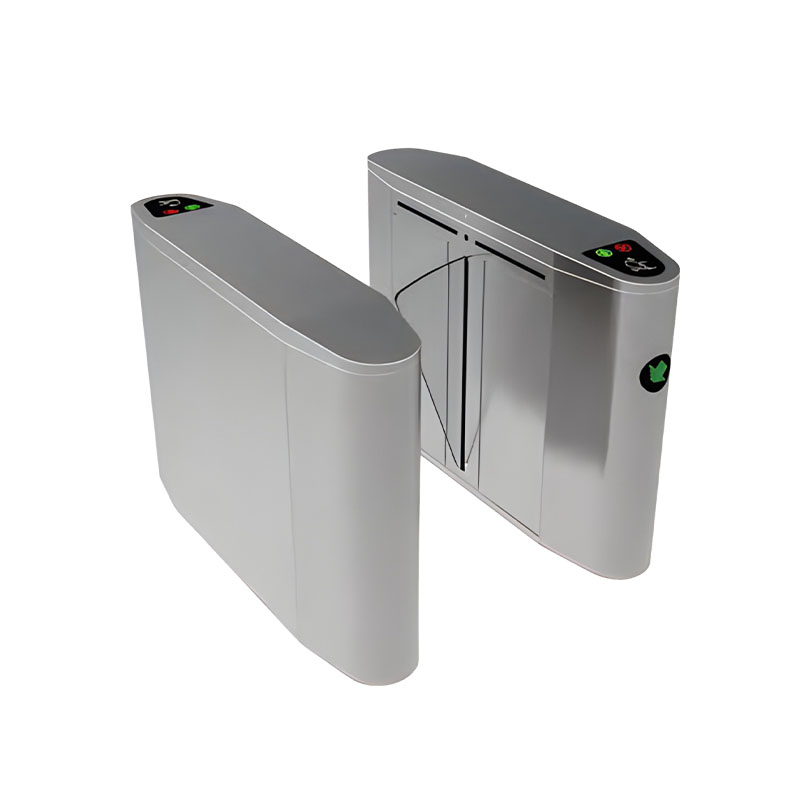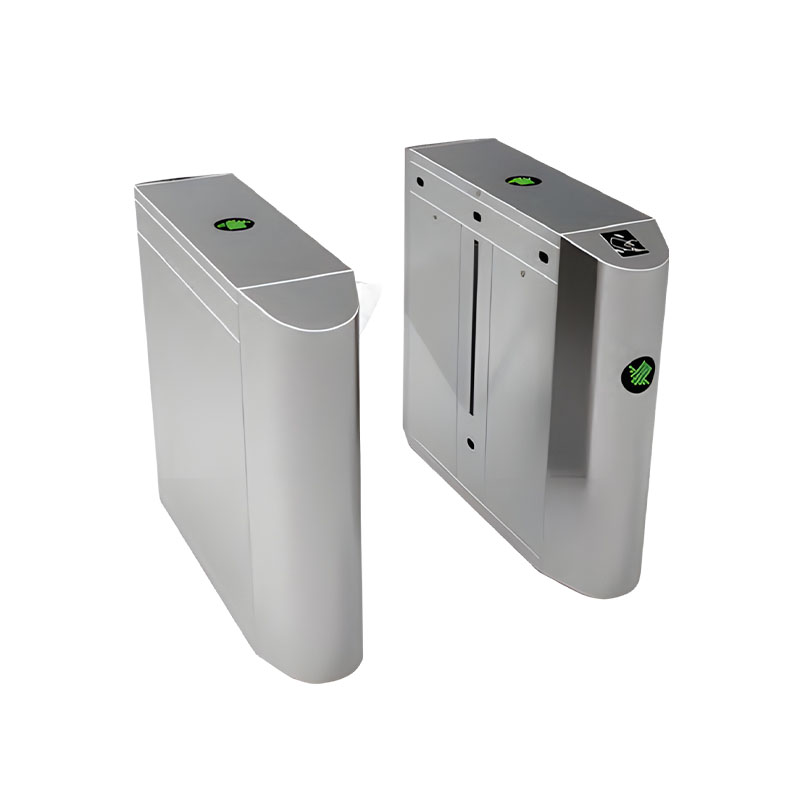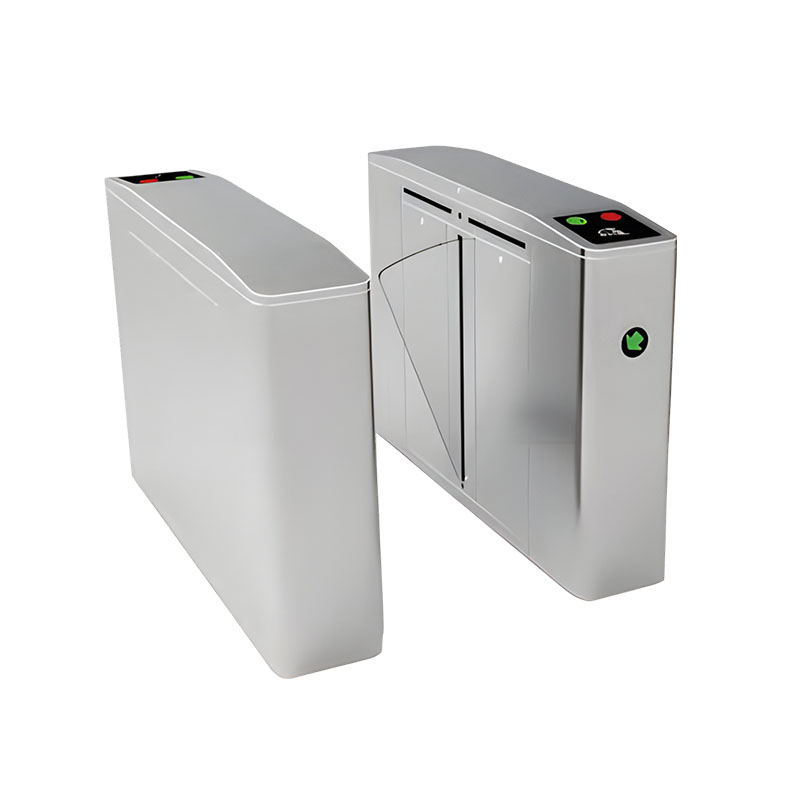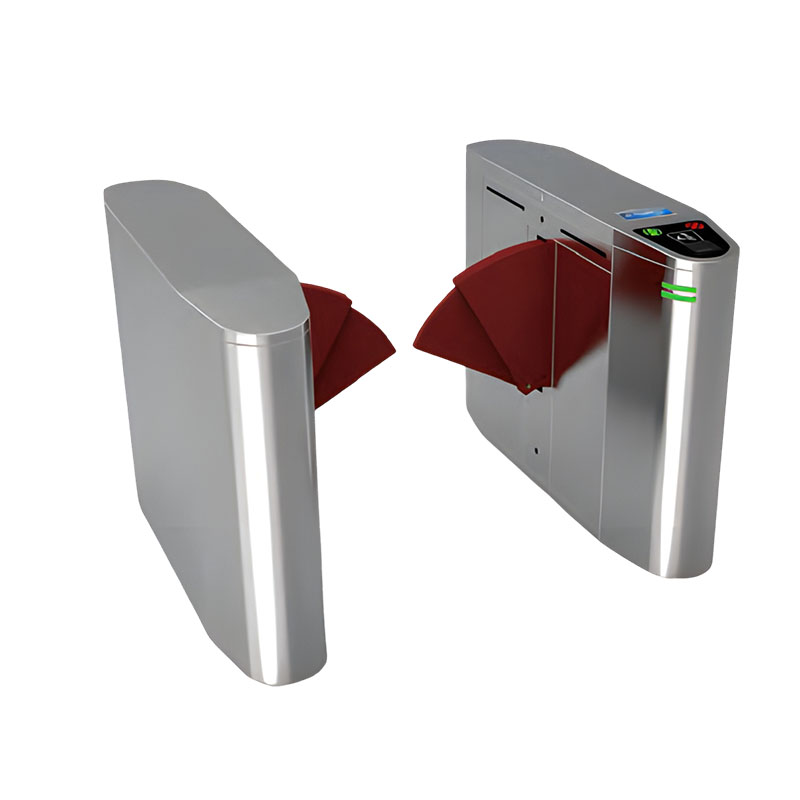In the event of a power outage or emergency evacuation, can a pedestrian access gate automatically open to ensure safe escape?
Release Time : 2025-11-11
In modern smart buildings, transportation hubs, schools, hospitals, and commercial complexes, pedestrian access gates, as core equipment for intelligent access control, not only bear the responsibility of access control and security, but must also quickly switch roles in extreme situations—especially in emergency evacuation scenarios such as power outages or fires—transforming from "gatekeeper" to "lifeline."
1. Automatic Release in the Event of Power Outage: Dual Mechanical and Electrical Protection
High-quality pedestrian access gates prioritize the "fail-safe" principle from the initial design stage. "Fail-safe" means that when the system loses power, the equipment should automatically enter the safest state for personnel—for turnstiles, this means the gate is fully open, forming an unobstructed passage. This function is primarily achieved in two ways: First, an electromagnetic lock or clutch device controls the swing arm/wing plate, locking the operating state when powered on. Once power is lost, the electromagnetic force disappears, and the spring or gravity mechanism immediately drives the gate back to the normally open position. Second, some high-end models have built-in supercapacitors or backup batteries, which can maintain power output for several seconds to tens of seconds after the main power supply is interrupted, completing the final "safe opening" action and remaining open. This design ensures that even in the event of a sudden power outage, line fault, or human-caused damage to the power supply, personnel can evacuate quickly and without hindrance.
2. Fire Protection Linkage: Intelligent Collaboration with Emergency Systems
Power-off release alone is insufficient to handle all emergency scenarios. True safety lies in the seamless linkage between the turnstile and the building's fire alarm system. Turnstiles installed on evacuation routes must be connected to the automatic fire alarm system. When smoke or heat detectors trigger a fire alarm signal, or a manual alarm button is pressed, the fire control center will immediately send an "emergency release" command to the turnstile. Regardless of whether there is power at this time, the turnstile will be forcibly unlocked and remain in the normally open state. Some intelligent turnstiles also support multi-level response modes—for example, a level one fire alarm only opens the turnstile in that area, while a level two fire alarm activates all access devices throughout the building, achieving graded, orderly, and efficient evacuation guidance. Furthermore, the system can simultaneously upload status information to the security platform, allowing the emergency command center to monitor the passage status of each exit in real time.
3. Humanized Details: Balancing Safety and Accidental Touch Prevention
To prevent accidental gate opening due to misoperation during daily use, while not sacrificing emergency response speed, modern turnstiles have achieved a fine balance in their safety logic. For example, under normal power conditions, even pressing the test button will not cause the gate to open arbitrarily; however, once a fire signal is received or a mains power interruption is detected, the system will bypass all authorization verifications and directly execute the release procedure. Simultaneously, the gate opening angle is typically designed to be ≥90 degrees, and can even reach 180 degrees for full opening, ensuring the passage of wheelchairs, stretchers, or multiple people side-by-side; the edges of the swing arms or wing plates are treated with soft rubber coating to prevent collision injuries during rapid reset.
Pedestrian access gates are far more than cold, impersonal barriers; they are dual-role vehicles integrating intelligent management and life protection. In daily life, they accurately identify and facilitate orderly passage; in emergencies, they decisively yield the way, ensuring unimpeded flow. It is this design philosophy of "strict management in normal times, open access in emergencies" that makes them an indispensable part of the smart city's public safety system. When the alarm sounds, every automatically opening gate is a testament to the principle of "life first."
1. Automatic Release in the Event of Power Outage: Dual Mechanical and Electrical Protection
High-quality pedestrian access gates prioritize the "fail-safe" principle from the initial design stage. "Fail-safe" means that when the system loses power, the equipment should automatically enter the safest state for personnel—for turnstiles, this means the gate is fully open, forming an unobstructed passage. This function is primarily achieved in two ways: First, an electromagnetic lock or clutch device controls the swing arm/wing plate, locking the operating state when powered on. Once power is lost, the electromagnetic force disappears, and the spring or gravity mechanism immediately drives the gate back to the normally open position. Second, some high-end models have built-in supercapacitors or backup batteries, which can maintain power output for several seconds to tens of seconds after the main power supply is interrupted, completing the final "safe opening" action and remaining open. This design ensures that even in the event of a sudden power outage, line fault, or human-caused damage to the power supply, personnel can evacuate quickly and without hindrance.
2. Fire Protection Linkage: Intelligent Collaboration with Emergency Systems
Power-off release alone is insufficient to handle all emergency scenarios. True safety lies in the seamless linkage between the turnstile and the building's fire alarm system. Turnstiles installed on evacuation routes must be connected to the automatic fire alarm system. When smoke or heat detectors trigger a fire alarm signal, or a manual alarm button is pressed, the fire control center will immediately send an "emergency release" command to the turnstile. Regardless of whether there is power at this time, the turnstile will be forcibly unlocked and remain in the normally open state. Some intelligent turnstiles also support multi-level response modes—for example, a level one fire alarm only opens the turnstile in that area, while a level two fire alarm activates all access devices throughout the building, achieving graded, orderly, and efficient evacuation guidance. Furthermore, the system can simultaneously upload status information to the security platform, allowing the emergency command center to monitor the passage status of each exit in real time.
3. Humanized Details: Balancing Safety and Accidental Touch Prevention
To prevent accidental gate opening due to misoperation during daily use, while not sacrificing emergency response speed, modern turnstiles have achieved a fine balance in their safety logic. For example, under normal power conditions, even pressing the test button will not cause the gate to open arbitrarily; however, once a fire signal is received or a mains power interruption is detected, the system will bypass all authorization verifications and directly execute the release procedure. Simultaneously, the gate opening angle is typically designed to be ≥90 degrees, and can even reach 180 degrees for full opening, ensuring the passage of wheelchairs, stretchers, or multiple people side-by-side; the edges of the swing arms or wing plates are treated with soft rubber coating to prevent collision injuries during rapid reset.
Pedestrian access gates are far more than cold, impersonal barriers; they are dual-role vehicles integrating intelligent management and life protection. In daily life, they accurately identify and facilitate orderly passage; in emergencies, they decisively yield the way, ensuring unimpeded flow. It is this design philosophy of "strict management in normal times, open access in emergencies" that makes them an indispensable part of the smart city's public safety system. When the alarm sounds, every automatically opening gate is a testament to the principle of "life first."







